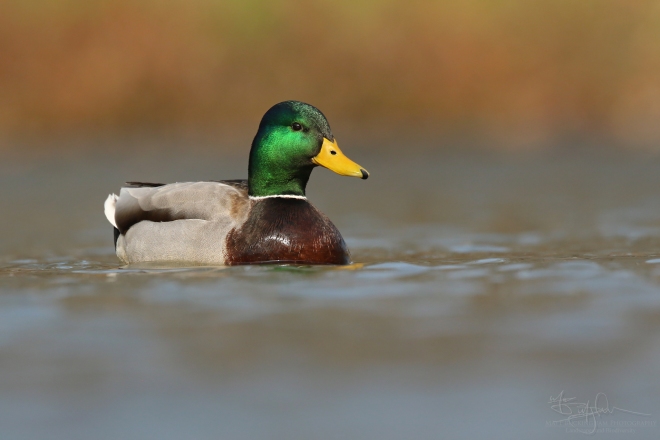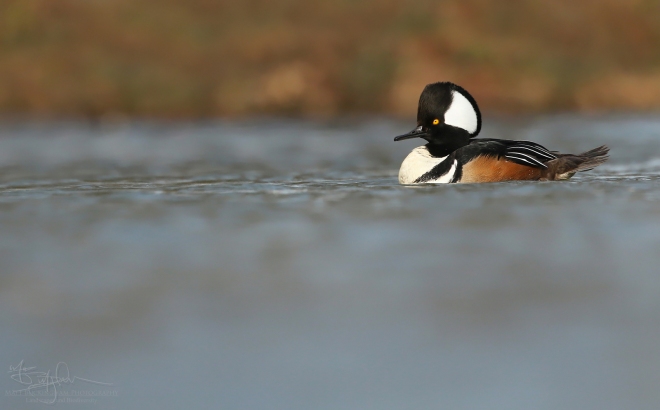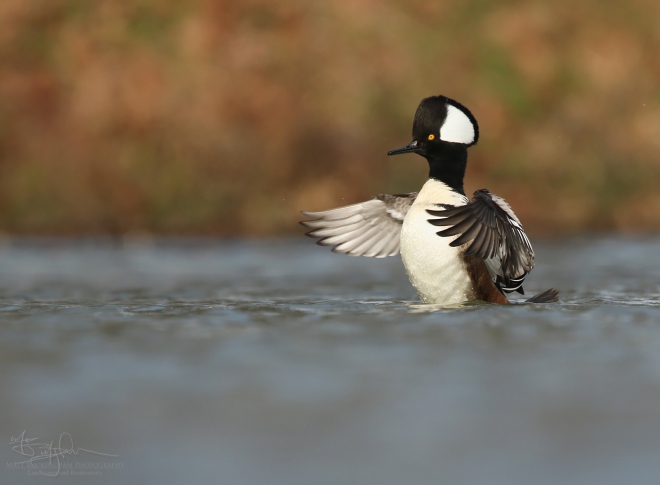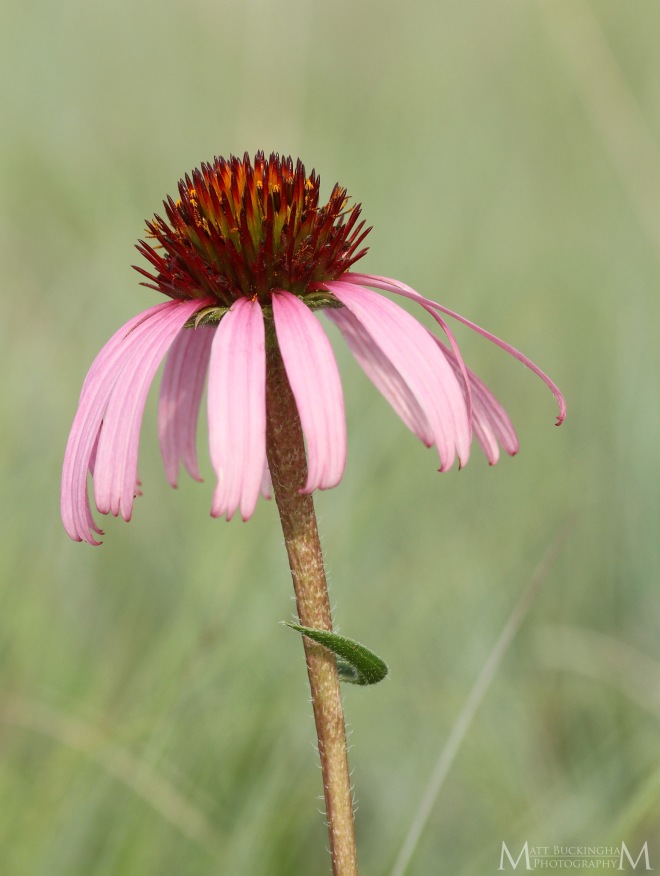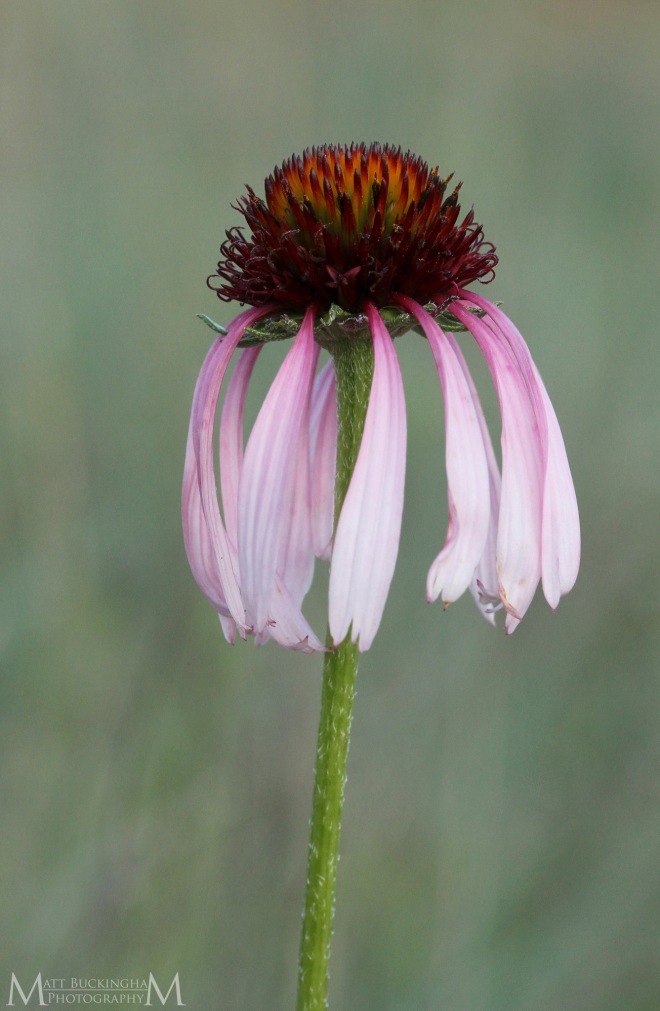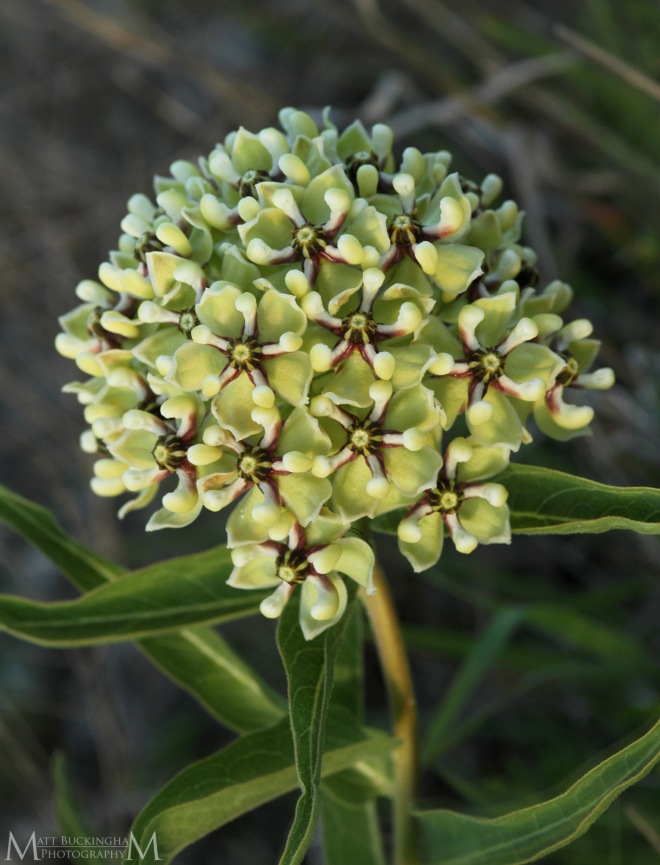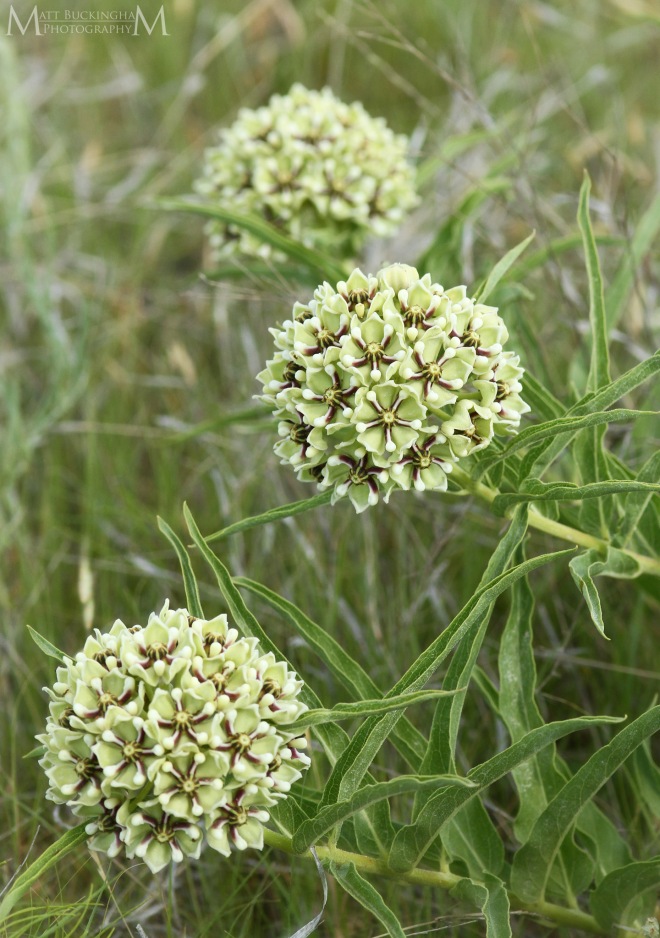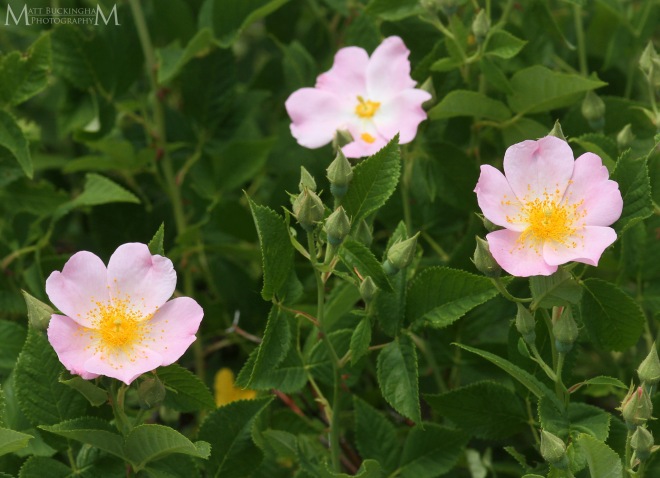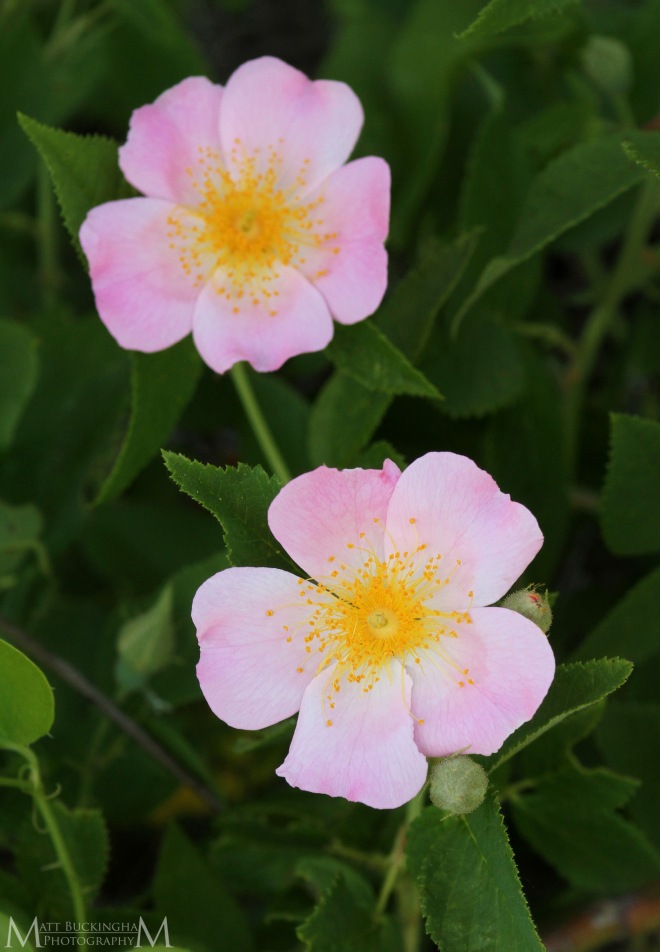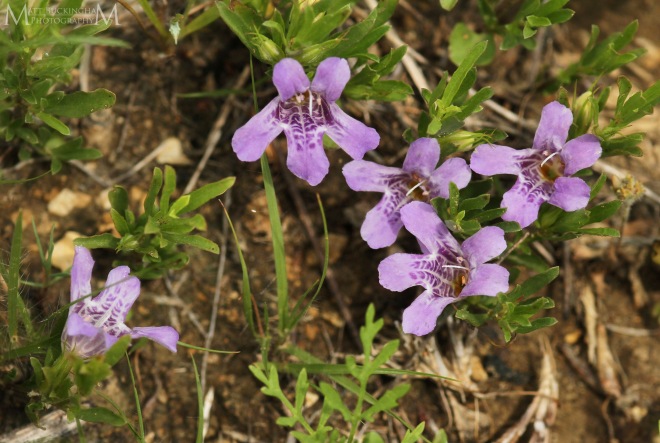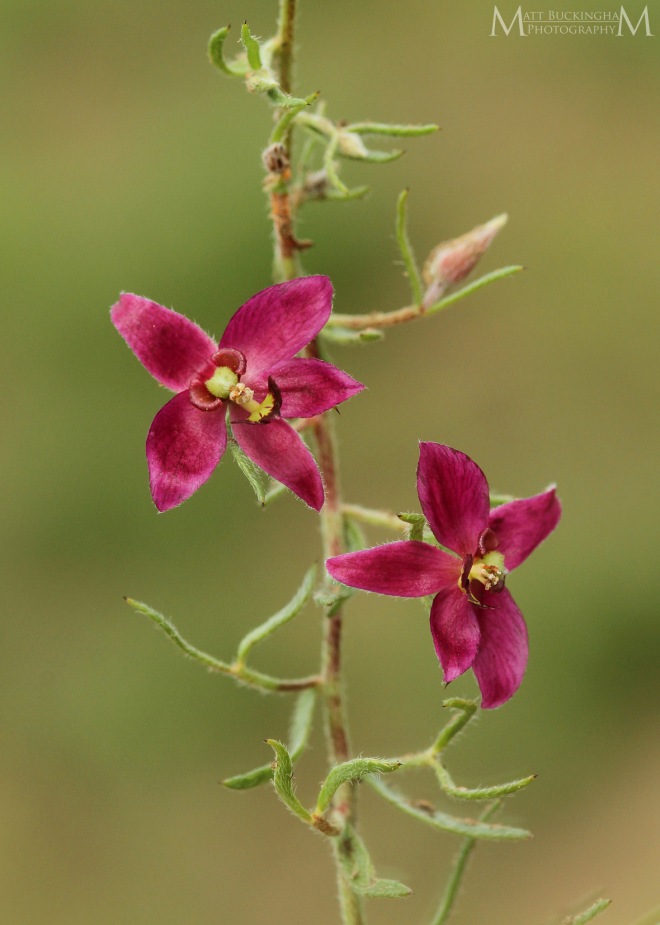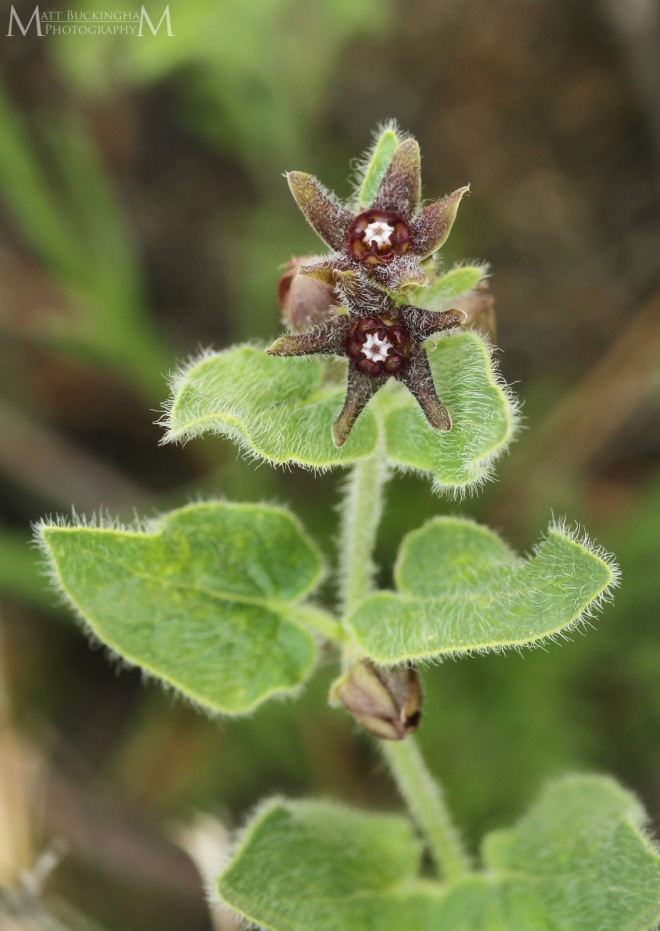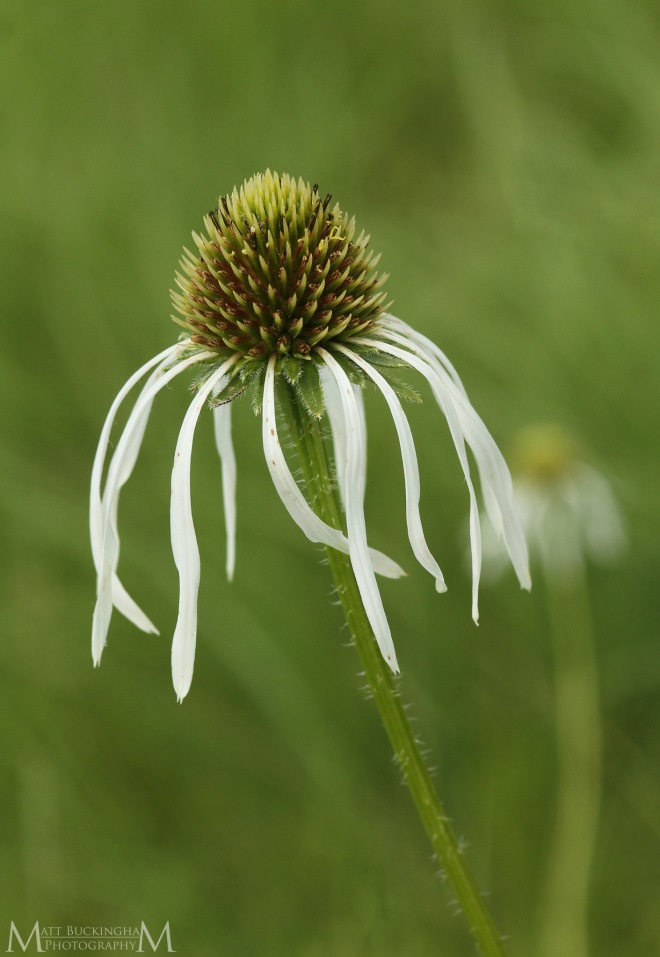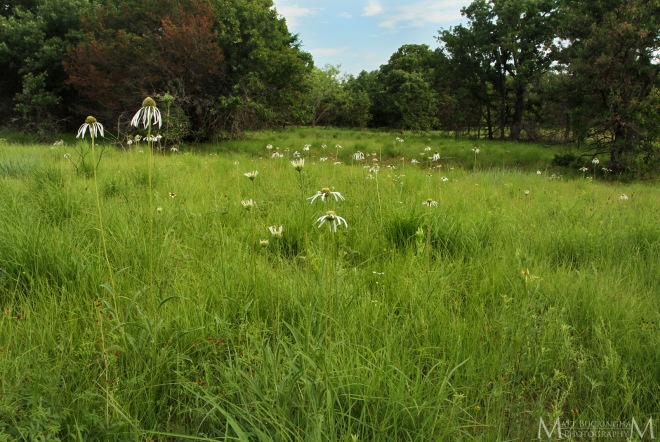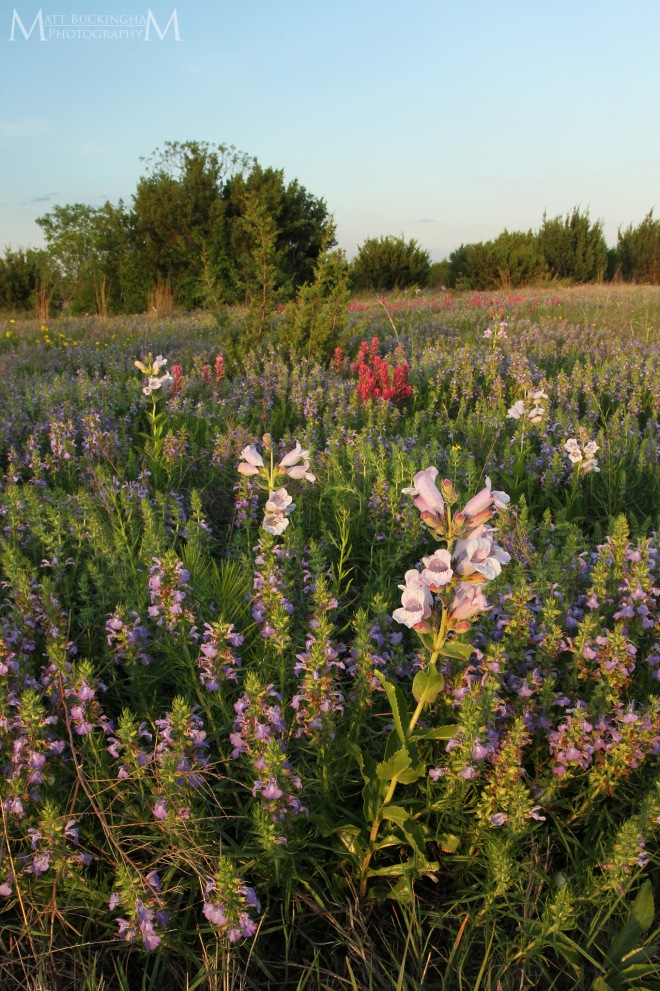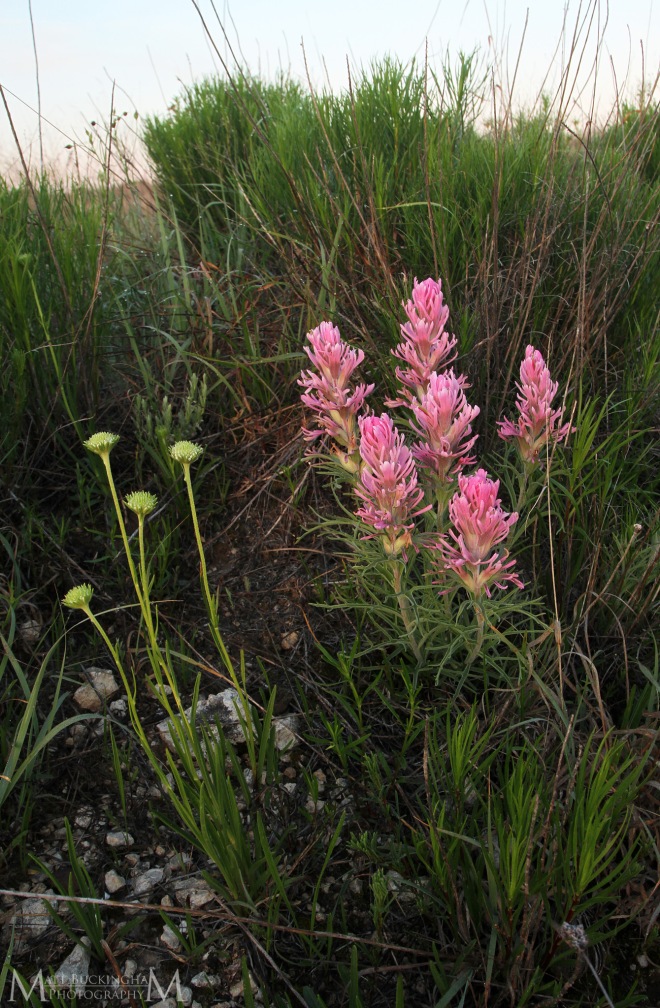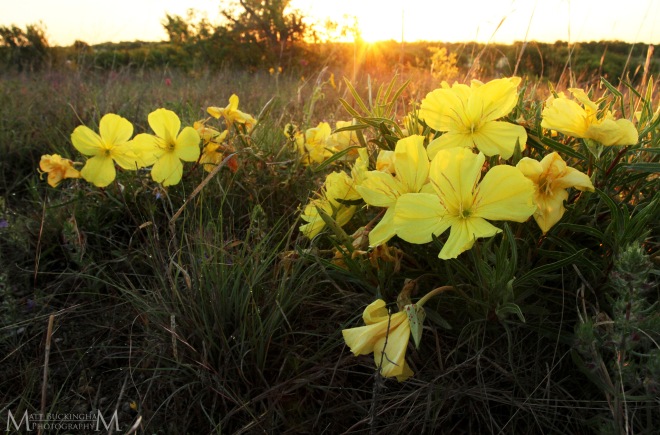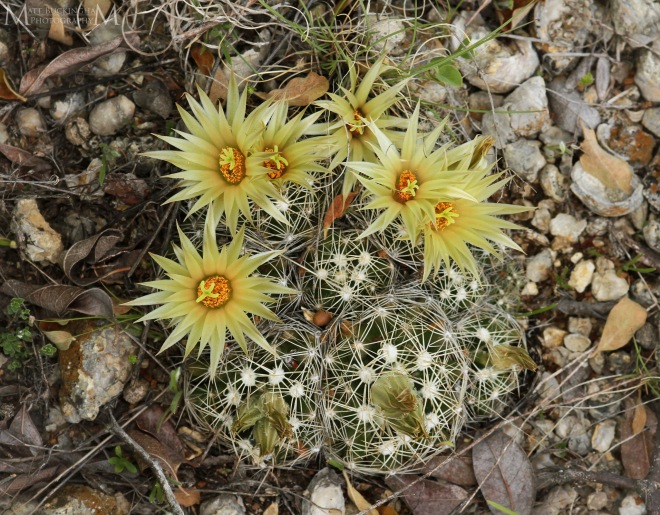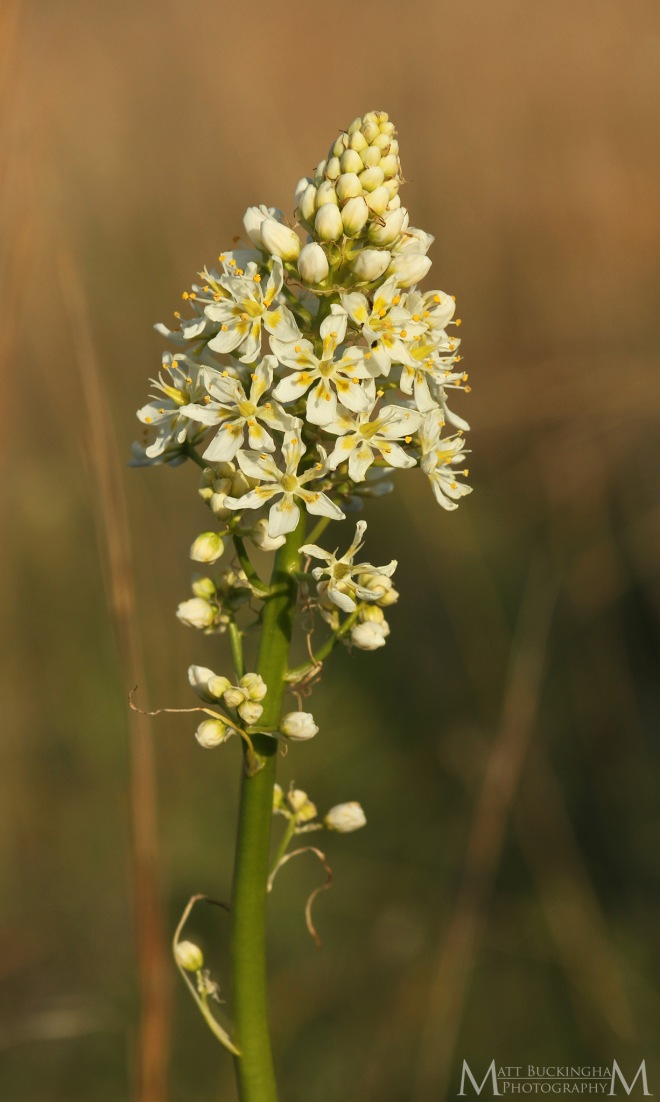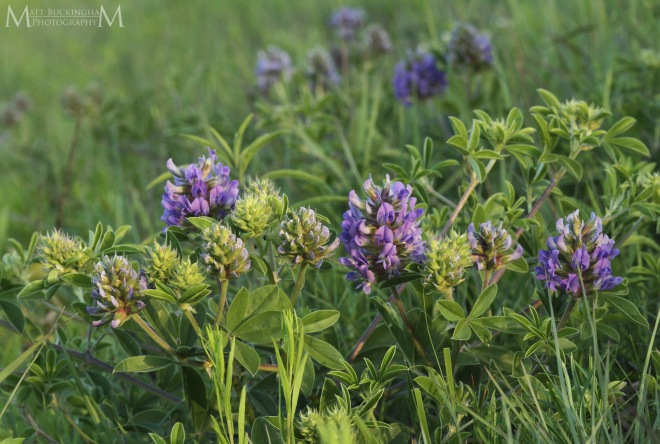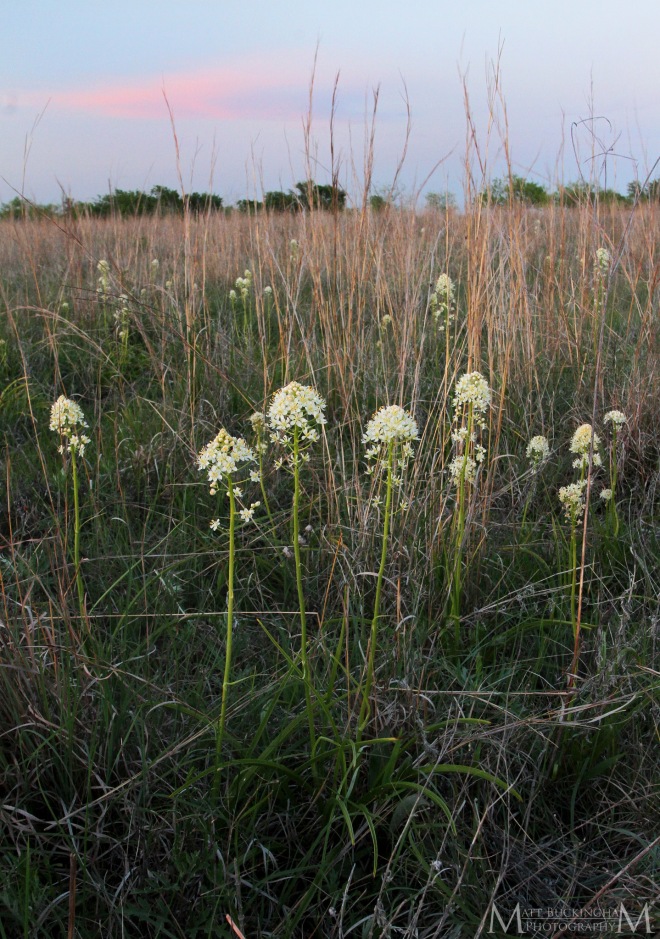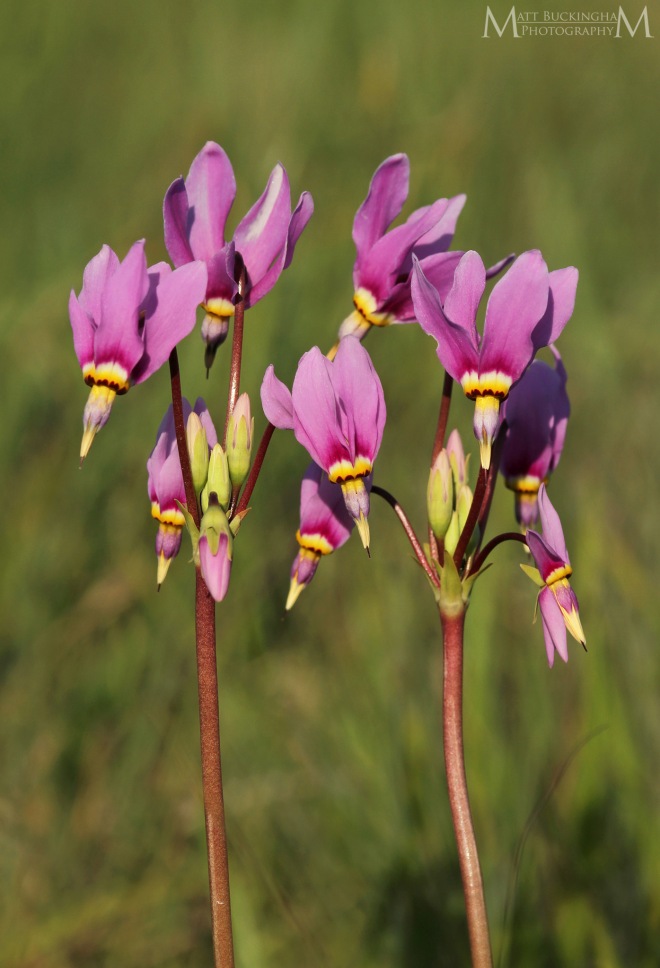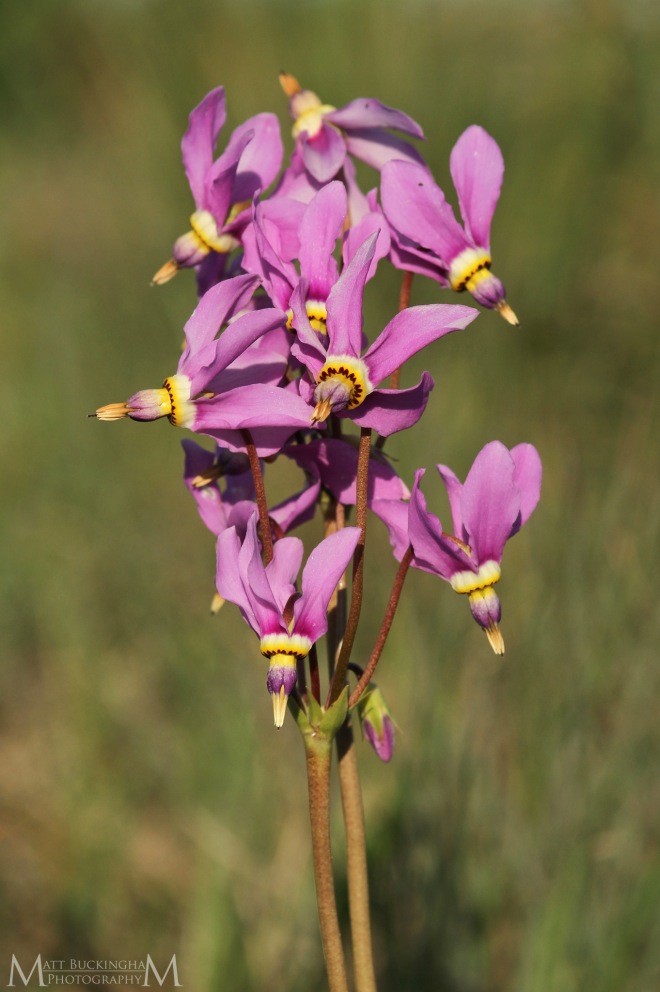
A Pine Warbler perches on the bare twigs of a winged elm in the understory of a mature pine/oak/hickory upland.
The last month or so here in East Texas has been plagued by a barrage of heat waves that have made spending time in the woods unpleasant at best, to downright miserable at worst. Because of the oppressive heat, and a variety of events in my personal life beyond my control, I have found myself lacking in motivation to pick up the camera and get out and explore. I think that slumps like this are only natural, and I have certainly experienced them in the past. Fortunately, I have always overcome them, and returned to this passion that has helped to shape the purpose that I feel in this thing we call life.
Thinking that a trip down memory lane might help rekindle the flame of my passion for the natural world, I recently went back through the many images I have taken this year. In doing so, I realized that there were a great many images that I have captured during short day and weekend trips that I had not yet posted.
So I decided to start writing, and in reliving these memories I found my spirits instantly lifted. Instead of breaking these images out into smaller posts I decided to make one giant post covering the last several months. So I invite my reader to settle in and enjoy this brief tour of some of the incredible biodiversity that can be found in the Lonestar State.
Though this post was meant to cover the first half of this year, my first post actually comes from December of last year, when Caro and I went out on a salamander hunting excursion with our friends Scott and Ashley Wahlberg. We struggled most of the day, until Ashley spotted this handsome male Spotted Salamander (Ambystoma maculatum) under debris at the bottom of a dry vernal pool. I titled the shot “Ancient Ritual”, and staged it to look like the salamander was just emerging to undertake his annual migration to the breeding pool of his birth, an event that his ancestors have undertaken for millennia.
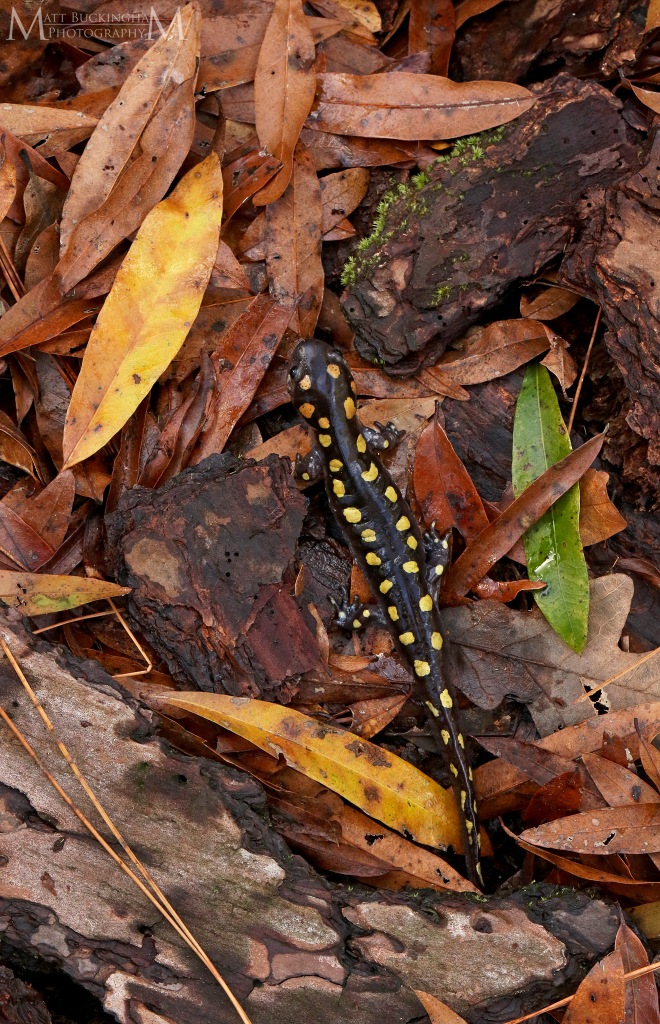
A Spotted Salamander emerges following a warm winter rain and begins his migration to his ancestral breeding pond.
A few days into the new year, Caro and I took a trip to Galveston. On the way back, I spotted several Roseate Spoonbills (Platalea ajaja) foraging in a tidal marsh in golden evening light. I could not resist the opportunity to try to capture some images of these beautiful, bizarre birds, so I pulled off and trudged into the mud flats. A local fisherman kept warning me of where all of the hidden holes were. Carefully I cradled my camera as I struggled to keep my balance in the muck. Finally as I drew closer I dropped down to my knees, then to my belly, and began to army crawl toward my quarry. The fisherman was kind enough to check on me frequently by shouting “are you ok”? I responded with a simple thumbs up.
I crawled forward through the mud and shallow water until I found myself in the perfect position for a low angle shot in that beautiful light. The spoonbill is such a curious subject that seems so majestic yet awkward at the same time. When I returned to my truck I was literally coated in mud from head to toe. Fortunately I had a change of clothes, and was able to clean up a bit and return home, smiling from the perfect ending to a wonderful day.

A Roseate Spoonbill forages in shallow tidal flats adjacent to Galveston Bay.

A Roseate Spoonbill forages in shallow tidal flats adjacent to Galveston Bay.
During the height of January, when little else was active, I turned my lens toward wintering songbirds. I spent several days at James Childress’s farm, where his land management activities have produced excellent habitat for a variety of species, a few of which are highlighted below.

An American Goldfinch perches on the fruit-bearing twigs of a deciduous holly.

A Pine Warbler forages in the limbs of a mature loblolly pine.
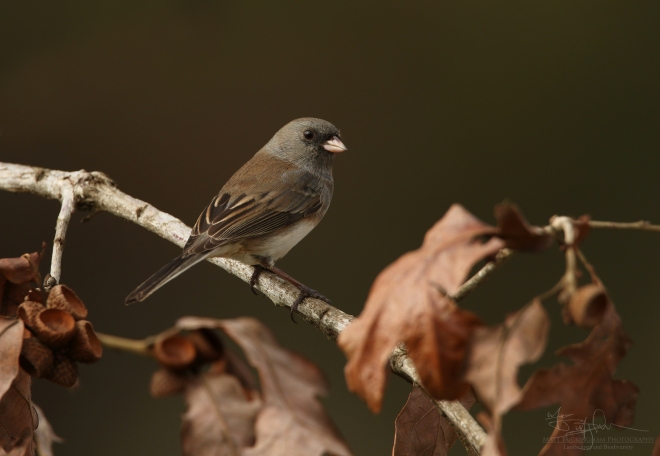
A Dark-eyed Junco pauses for a moment on a branch of an old post oak.

A White-crowned Sparrow on its wintering grounds in Angelina County.
By early February in the Pineywoods, winter begins releasing its grip, and a few brave floral souls emerge to reveal their blossoms to the world. One of the earliest, and one of my all time favorite wildflowers, the bloodroot, blooms in the deep woods. Likely never common in the Pineywoods, it has become exceedingly scarce over the last century due to a combination of habitat loss and over-harvest for its medicinal qualities.

Bloodroot grows from the crook of an old tree root.

A Bloodroot flower emerges from the dense leaf litter.
James and I also spent a few days photographing birds at the Pineywoods Native Plant Center on the Stephen F. Austin State University Campus. It includes a remnant patch of near old growth forest, and provides excellent opportunities for wildlife observation. The following images were all made at this special place.
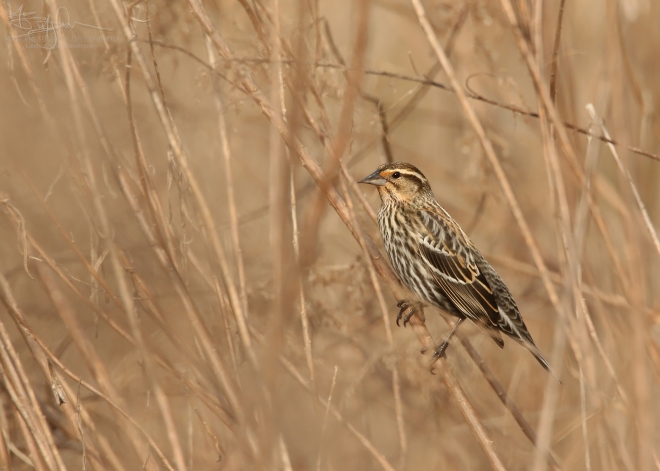
A Female Red-winged Blackbird (Agelaius phoeniceus) perches in a dense tangle of dried vegetation.

A White-throated Sparrow (Zonotrichia albicollis) blends in to the winter browns of a prairie remnant.

A Pine Siskin (Spinus pinus) forages on a branch of a blooming Eastern redbud (Cercis canadensis).
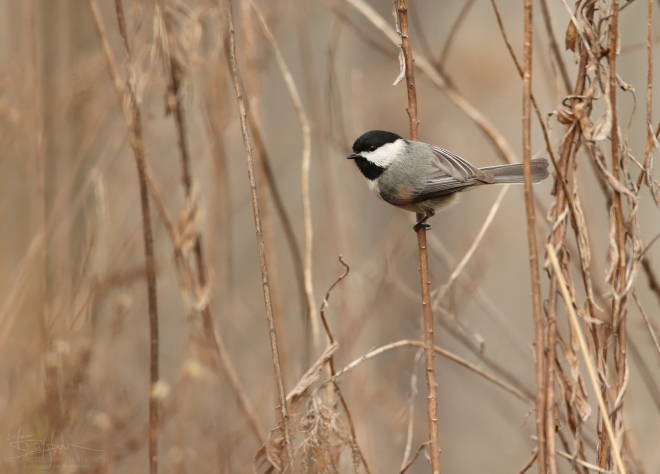
A Carolina Chickadee (Poecile carolinensis) pauses among dense winter vegetation.
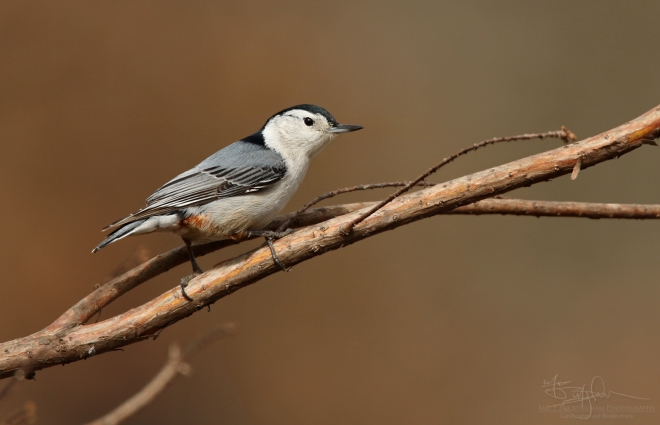
A handsome White-breasted Nuthatch (Sitta carolinensis) out and about on a chilly early spring morning.
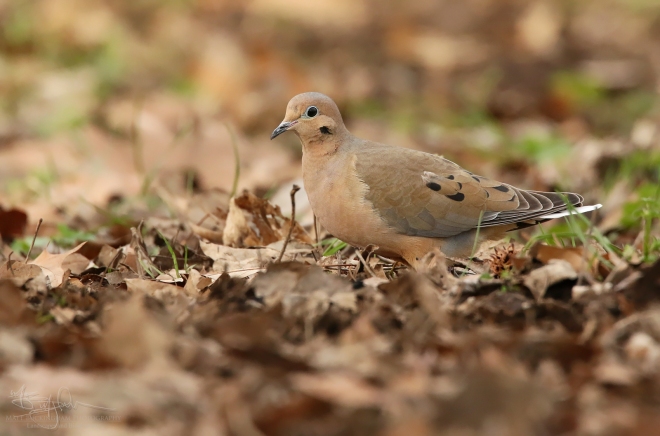
A Mourning Dove (Zenaida macrura) forages on the forest floor.
As February gave way to March, spring was in full swing in the Pineywoods. Caro and I spent an afternoon hiking in the Sam Houston National Forest. Pollinators like the Falcate Orangetip (Anthocharis midea) were out in droves, and the violets were putting on a show on the forest floor.

A female Falcate Orangetip nectars on the blooms of springcress (Cardamine bulbosa), on of its host plants.

An Early Blue Violet (Viola palmata) blooms on the forest floor.
I spent one March day exploring the Columbia Bottomlands, a unique forested community in southeast Texas, where I observed a number of interesting wildflowers in bloom, including the Purple Rocket (Iodanthus pinnatifidus), which has a peculiar distribution. This member of the mustard family (Brassicacea) can be found in many central and eastern states, including much of Arkansas and eastern Oklahoma, however in Texas it is only known from a few southeastern and south-central counties.
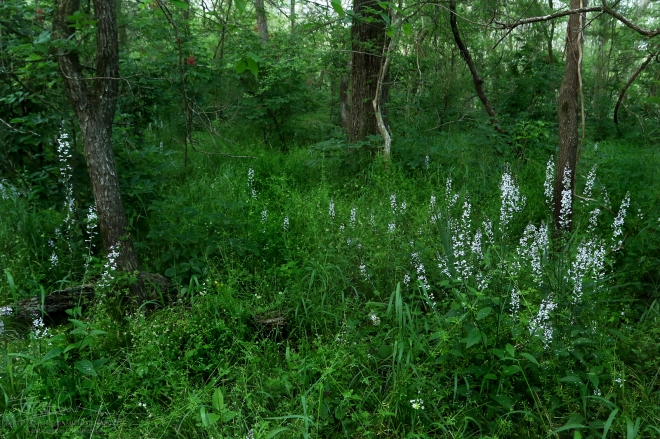
Purple Rocket blooms in profusion in a coastal upland forest.
I also found numerous Zigzag Irises (Iris brevicaulis) and a proliferation of Butterweed (Packera glabella) in bloom among the sedges and other wetland plants in these unique hardwood bottoms.

Zigzag Iris blooms in the understory of the Columbia Bottomlands.
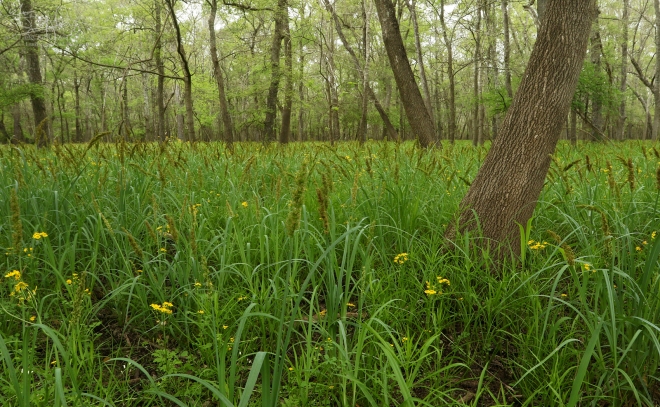
Butterweed and Raven’s-foot Sedge (Carex crus-corvi) bloom in a forested wetland in the Columbia Bottomlands.
Back in the Pineywoods, I set out to explore a high quality forested seep where I found the imperiled Texas Trillium (Trillium texanum) coming into bloom.
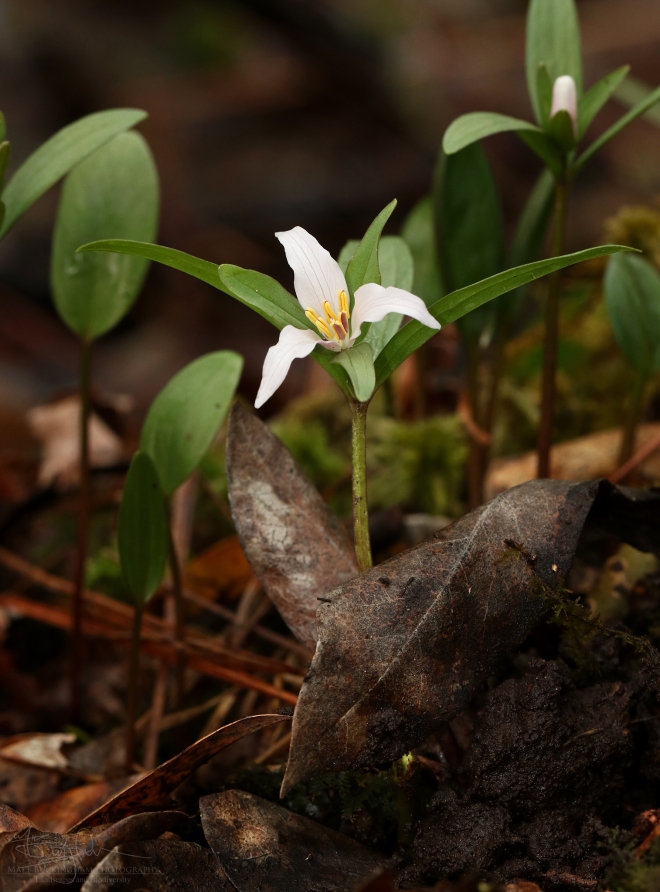
The rare Texas Trillium blooms in an old growth forested seep.
In early March, I visited our good friends Susan and Viron’s property for our annual botanical bonanza looking for rare spring ephemeral wildflowers. As usual, we were not disappointed. The following three images are from the outing.
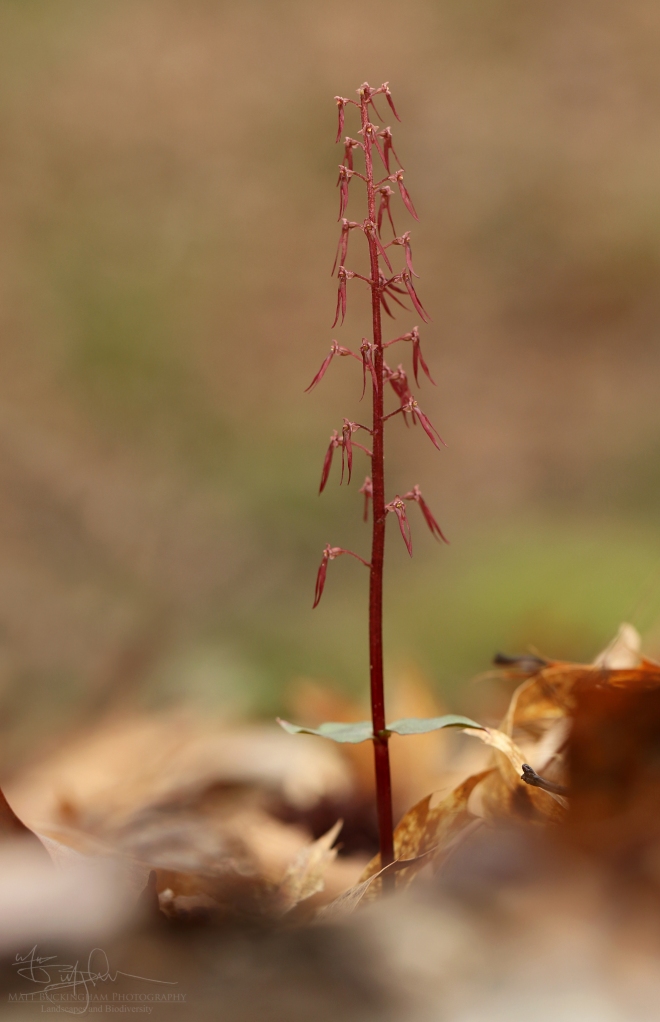
The tiny Southern Twayblade (Listera australis) is one of the earliest orchids to bloom in the Pineywoods.

The delicate blooms of a Wood Rush (Luzula sp.) are best observed up close.

Leaves of Cutleaf Toothwort (Cardamine concactenata) and Yellow Trout Lily (Erythronium rostratum) decorate the forest floor. I find the leaves of these species just as interesting as the blooms.
Texas is known for its roadsides brimming with bluebonnets, however wild, native populations of these dainty lupines can be hard to find, particularly in the Pineywoods. I was happy to find and photograph what I believe to be truly wild populations of the Sandyland Bluebonnet (Lupinus subcarnosus) in Houston and Rusk Counties this spring.

A Sandylands Bluebonnet blooms in a sandhill forest in the Pineywoods.
While taking a pit stop on our way to visit my family in Houston, I spotted a brilliant creamy-looking pink and yellow Rosy Maple Moth (Dryocampa rubicunda) clinging to a building wall, having been drawn in the night before by artificial lights. These members of the silkworm moth family (Saturniidae) are wide-ranging in the eastern U.S., however I only occasionally encounter them in Texas. I gently moved it from the building to a nearby patch of woods in hopes to increase its chances for survival and reproduction.
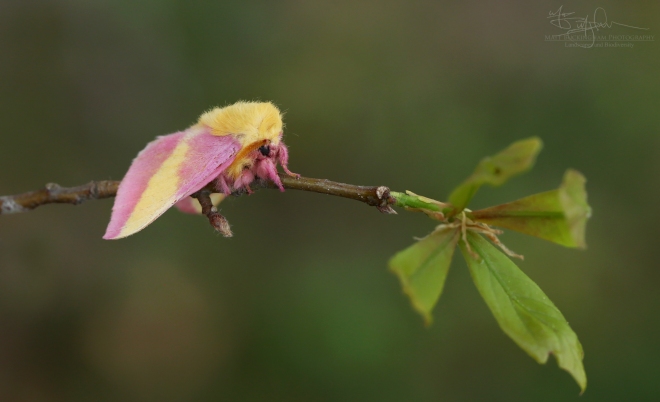
The Rosy Maple Moth is one of our most colorful moths.
Last year my friend Jared Barnes told me about a population of Prairie Celestials (Nemastylis geminiflora) that he discovered last year deep in the Pineywoods. This spring calciphile is common throughout much of central Texas, where calcareous soils are more prevalent, however it is quite rare in East Texas and western Louisiana, so I was thrilled at the chance to see and photograph it on my home turf. I got the chance in late March, when I visited the site that Jared told me about and found it in full bloom.

Prairie Celestials bloom in a remnant prairie in Nacogdoches County.
On March 30, 2014, I married the love of my life. Five years later we spent our anniversary in San Antonio, in a quaint hotel just next to the Alamo. We enjoyed spending time in the historic city and shopping and dining on the River Walk, however I couldn’t resist the opportunity to get a few hours of nature time in. We visited Cascade Caverns and saw the diminutive endemic Cascade Caverns Salamander (Eurycea latitans), and spent some times along the scenic cypress lined creeks and rivers of the region.

The clear waters of Bandera Creek flow over boulders and cypress roots.
I also stopped to explore a small chalk prairie where Lindheimer’s Paintbrush (Castilleja lindheimeri) was blooming in such numbers that it appeared the prairie was aflame.
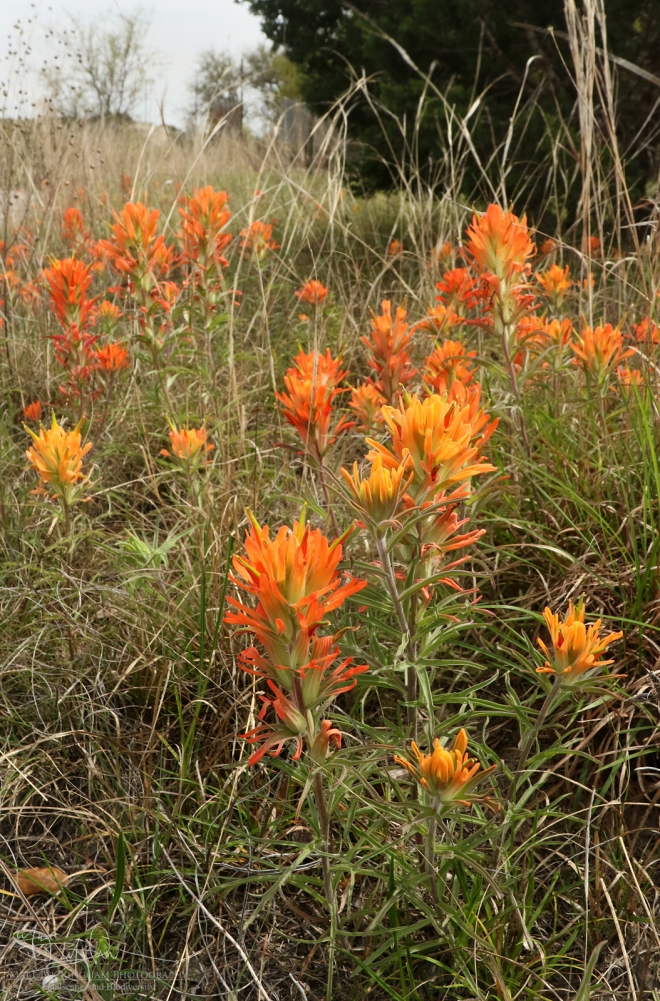
Lindheimer’s Paintbrush blooms in a chalk prairie in the Texas Hill Country.

The curious blooms of a Lindheimer’s Paintbrush.
The following week, back at home, Scott and I set out in hopes of finding the rare Whorled Pogonia (Isotria verticillata) in bloom, after receiving a tip that they were flowering along the margins of a baygall about 30 minutes from my home. Not far from the site I spotted the quick movement of some manner of skink scurrying through the leaf litter. Fortunately I was quick enough to capture the nimble reptile, and we were excited to see that it was a Southern Coal Skink (Plestiodon anthracinus), a species that is seldom encountered in the state.
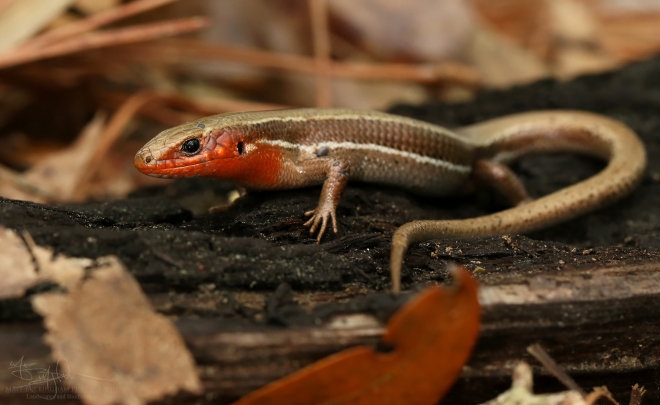
A male Southern Coal Skink, a seldom seen denizen of the Pineywoods.
After some searching, we found the pogonias as well! These exotic looking orchids are extremely difficult to spot, but close examination reveals a beautiful, bizarre bloom. The Whorled Pogonia is imperiled in Texas, and has seemingly disappeared from a number of historic locations.
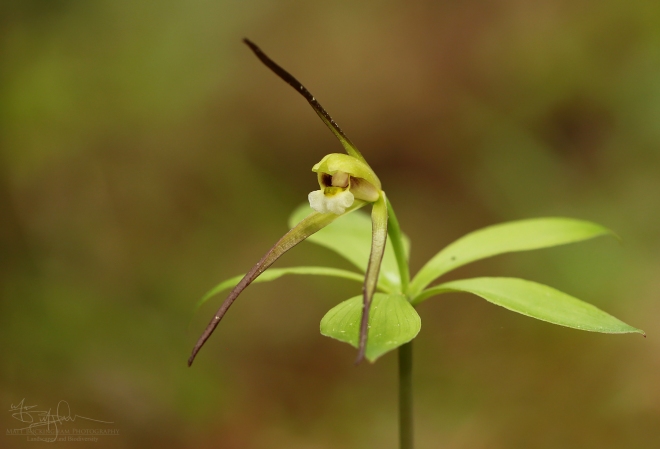
The exotic looking flower of the Whorled Pogonia.
The pogonias were growing near the transition from mesic pine-hardwood forest to a highly acidic forested seep. Nearby we found a crystal clear springfed stream flowing over pure sand.
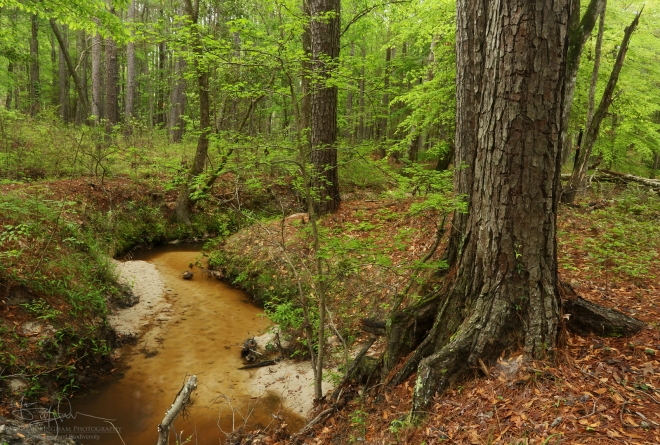
A creek cuts through mesic pine-hardwood forest.
That same day I would discover my own population of Nemastylis geminifolia in the Pineywoods, this time occurring in a rich calcareous woodland not far from the Louisiana border.

Prairie Celestials bloom in an open, calcareous forest in Sabine County.

A Zebra Longhorn (Typocerus zebra) feeds on the blooms of a Prairie Celestial.
Scott and I also enjoyed observing several other wildflowers in bloom that day, including a personal favorite, Wood Betony or Lousewort (Pedicularis canadensis).

Wood Betony blooms in the forest understory.
Mid-April Caro and I took a weekend trip to the Blackland Prairies and Cross Timbers of North-Central Texas, a region that has fast become one of my favorites in the state. On the way, we stopped at an extensive outcrop of the iron-rich Weches Formation where I had previously seen the rare Clasping Jewelflower (Streptanthus maculatus) in bloom. I was at the site too late for peak bloom last year, and only observed a few individuals in flower. This year I timed it just right, and caught thousands upon thousands in bloom in the glades and stunted woodlands growing on this unique geologic substrate.
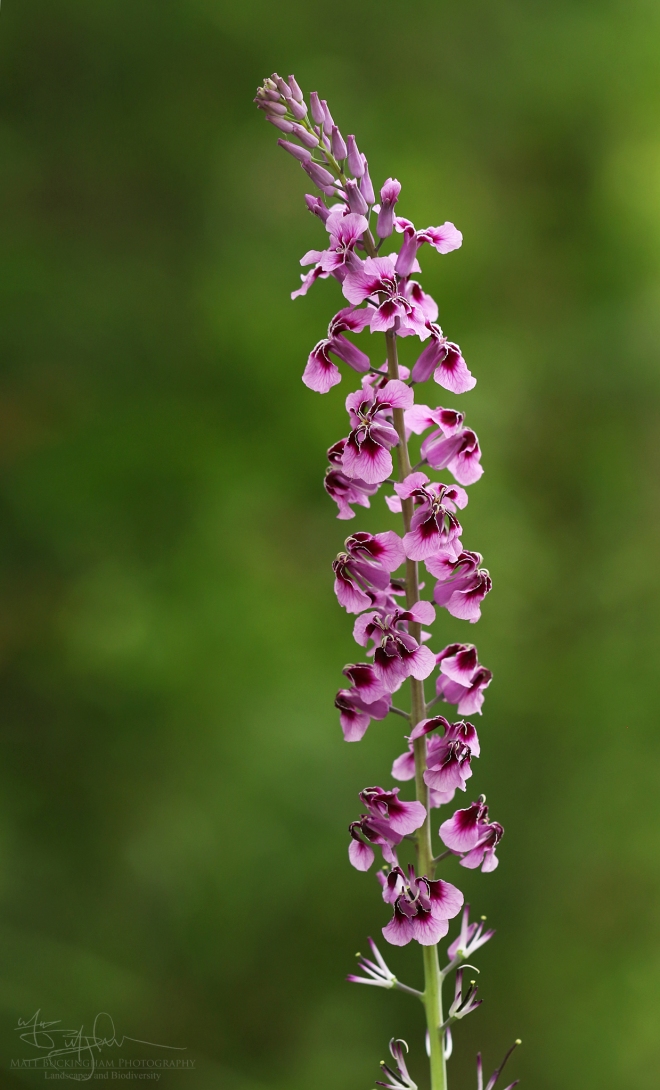
The rare Clasping Jewelflower blooms in a remnant Weches Woodland.
Streptanthus maculatus was one of the species on my list of biodiversity goals for which this blog was established. Though I technically checked it off my list last year, and posted a blog about it, I’m taking this opportunity to showcase a few more images of this striking plant.
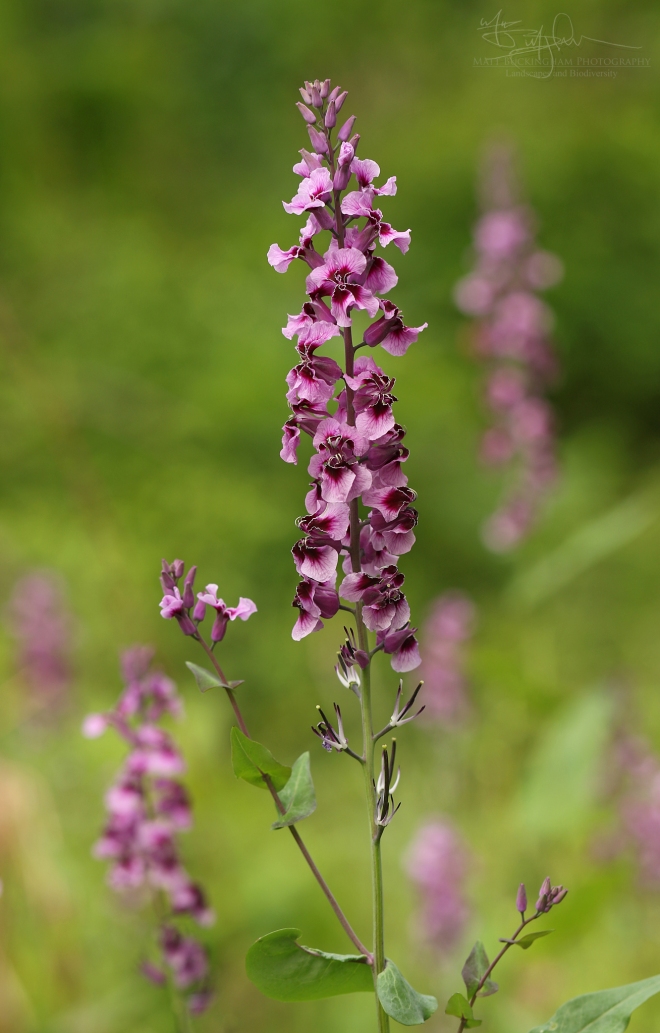
The rare Clasping Jewelflower blooms in a remnant Weches Woodland.

A closeup of the fascinating blooms of the Clasping Jewelflower.
There were a number of other interesting things blooming over the Weches Formation, including Heartleaf Four-O’clock (Mirabilis nyctaginea) and Louisiana Vetch (Vicia ludoviciana).

Heartleaf Four-O’clock blooms in a forest clearing on the Weches Formation.
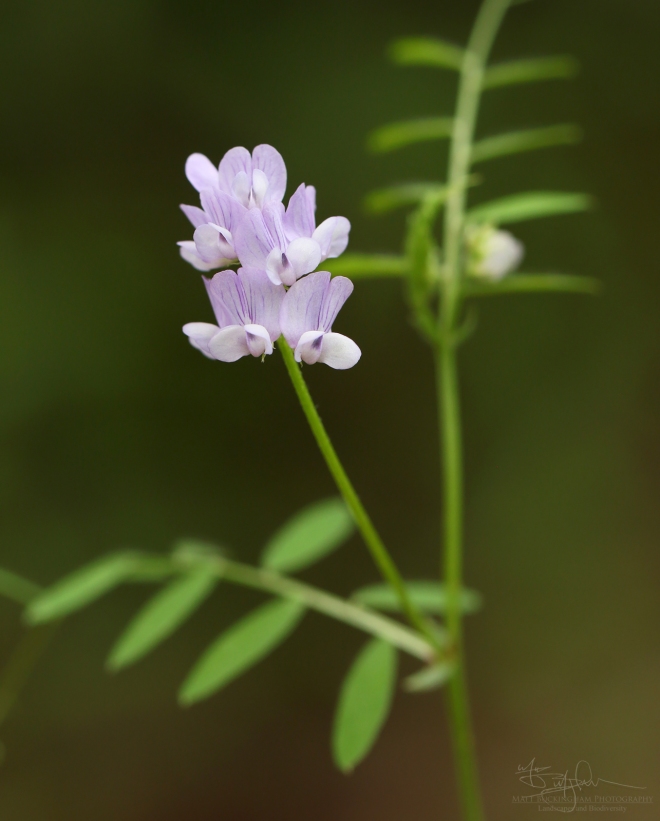
The tiny blooms of Louisiana Vetch
When we arrived in the Blackland Prairies, I was able to track down a stunning plant that I had long hoped to photograph – the Blue Wild Indigo (Baptisia australis), a species of the east that barely enters Texas in the eastern panhandle and north-central portion of the state.

Blue Wild Indigo blooms in a Blackland Prairie remnant.

Blue Wild Indigo blooms in a Blackland Prairie remnant.
We were fortunate to visit a site that my friend David Bezanson of the nature conservancy describes as “the finest Blackland Prairie remnant in Texas”. I had hoped for better light, but I was in awe in the overwhelming beauty and diversity of the place.

A Blackland Prairie remnant in Collin County.
In a rich woodland of Bois d’arc and elm near the Oklahoma border, I found a striking Texas rarity, the Violet Blue-eyed Mary (Collinsia violacea). We were at the tail end of their blooming season, and I hope to visit again next spring.

Violet Blue-eyed Mary blooms in a Bois d’arc/elm woodland in Grayson County.
Driving along a rural county road in Cooke County, I spotted hints of light blue and purple along the roadside. I could tell immediately that it was a species of hyacinth (Camassia). I initially suspected that they were the fairly common Wild Hyacinth (Camassia scilloides), however in this part of Texas there is another possibility. These turned out to be the much less common Prairie Hyacinth (Camassia angusta), identifiable by the large number of persistent sterile bracts.

Prairie Camas blooms in a rich prairie remnant in Cooke County.
After exploring some area back roads, we stopped at one of my favorite prairie remnants in the state, a small (~4.5-acre) patch of Grand Prairie that harbors incredible plant species diversity.

Prairie Paintbrush (Castilleja citrina) and Hairy Cornsalad (Valerianella amarella) bloom in the Grand Prairie.
In a good year, thousands upon thousands of Eastern Shooting Stars (Dodecatheon meadia) bloom here. In Texas, this species is restricted to the northern Grand and Blackland Prairies, with a few remnant populations in the Edward’s Plateau.

Eastern Shooting Star blooms in the Grand Prairie.

The blooms of the Eastern Shooting Star are among our most photogenic native wildflowers.
The weekend after our trip to North-Central Texas, we found ourselves back on the upper coast. Galveston Bay is lined with a number of high quality saltmarshes that provide a brief glimpse of what the Upper Texas Coast looked like before coastline development and industry took their toll. Today, these remnant marshes are reduced in size, and generally surrounded by subdivisions or refineries. In the image below, a luxury beach-front community can be seen in the distance. Even if the development does not directly impact the marsh itself, it eliminates important buffer zones and reduces biodiversity in the process. The combination of this development and accelerating rates of sea level rise make these special places one of our most imperiled communities.
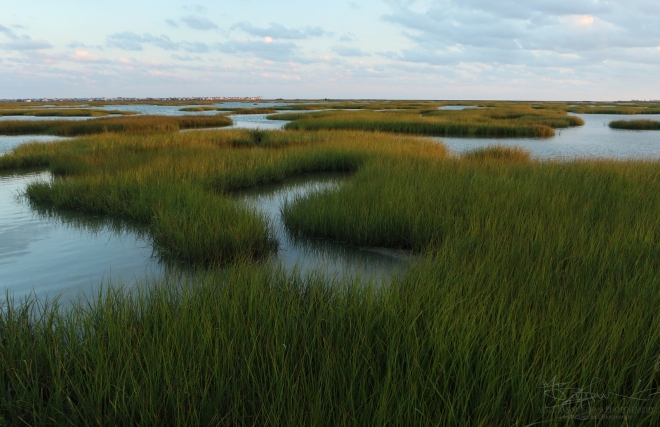
A high quality saltmarsh holds on in the face of rampant coastal development.
While on the coast we met up with my parents and James and Erin, and spent some time searching for Neotropical Migrants making their way toward northern breeding grounds. Conditions were generally poor during that trip, but we did manage to see a few interesting things, including a male Blue Grosbeak in the process of molting into its adult plumage.
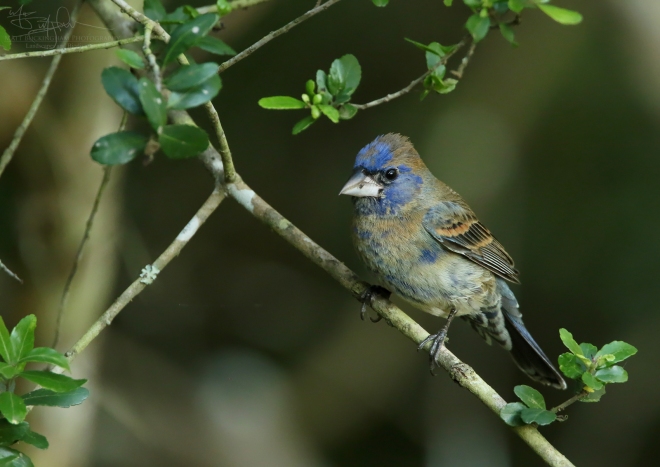
This young male Blue Grosbeak has just begun to attain his adult plumage.
At the famous rookery at the Houston Audubon Society’s Smith Oaks Preserve we saw a number of waterbirds tending to newly hatched chicks.

Neotropic Cormorant (Phalacrocorax brasilianus) chicks beg for a meal.

Two generations of Great Egrets (Ardea alba).
The next morning James and I rose early and made our way to the beach in hopes of capturing some images of Least Terns (Sternula antillarum) in the early morning light. We were fortunate enough to see a number of courting pairs.

Courting Least Terns
We watched as males would capture small fish and present them to the females while vocalizing and performing a ritualized dance.
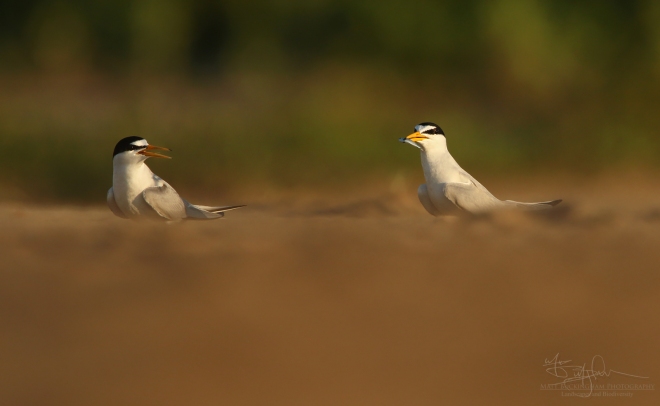
Courting Least Terns
Near the terns we spotted a number of Wilson’s Plovers (Charadrius wilsonii). These boisterous shorebirds were defending their nests by feigning injury in an attempt to lure would-be predators away from the nests.

A Wilson’s Plover hides among the dune vegetation.
A number of Horned Larks (Eremophila alpestris) were also seen on the dunes that morning.
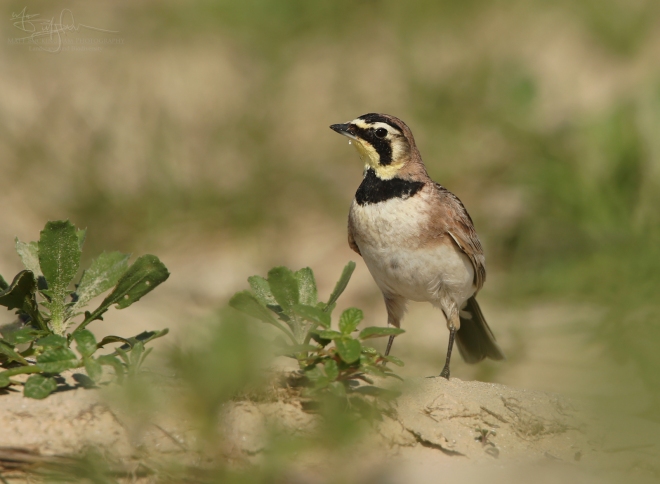
A Horned Lark among the foredunes.
As spring gradually began to give way to summer, I spent some time photographing some local residents, including a number of Northern Cardinals (Cardinalis cardinalis) that regularly visit the feeders in James’s grandmother’s yard.

A fluffed up Northern Cardinal on the branch of an old elm.

A male Northern Cardinal among the leaves of a Southern Red Oak.
While wandering James’s property in search of birds, we spotted an old female Three-toed Box Turtle (Terrapene carolina triunguis) in a small puddle formed by recent rains.
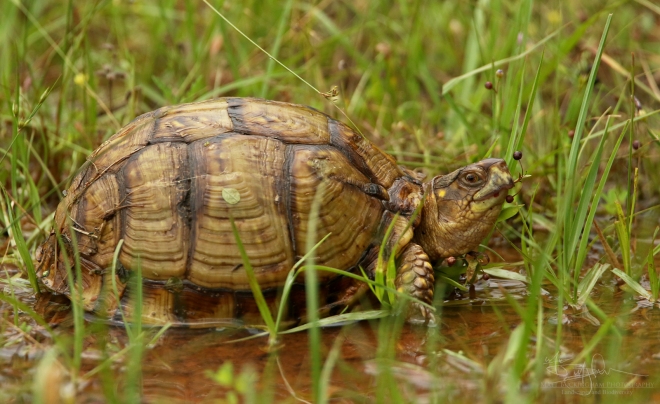
An old Three-toed Box Turtle takes advantage of a puddle formed by recent rains.
One of my favorite activities is driving remote, rural roads in Deep East Texas. Such outings usually lead to interesting discoveries. One May evening, while driving through a recent clearcut in Newton County, I heard the unmistakable buzzy trill of a Prairie Warbler (Setophaga discolor). Though clearcuts are certainly unsightly and conjure up thoughts of environmental destruction, during their first few years of regeneration they provide habitat for a variety of birds including Prairie Warblers, Yellow-breasted Chats, Indigo Buntings, Northern Bobwhite and more. When done on a proper scale and rotation, clearcuts can simulate natural disturbances and can enhance the overall health and biodiversity of a forested region.

A Prairie Warbler sings from atop a growing pine sapling.
Mid May is my favorite time to explore the sandhills of the Post Oak Savanna. These interesting habitats are home to a number of endemic species and in May the wildflowers are on full display. Pictured below are Eastern Prickly Pears (Opuntia cespitosa), and the rare endemic mints Brazoria truncata var. pulcherrima and Rhododon ciliatus.

The brilliant colors of a Post Oak Savanna sand “blowout” in spring.
One morning, while I was preparing breakfast, Caro rushed in from the backyard and told me to come quick. There was a brightly colored Three-toed Box Turtle at the edge of our little vegetable garden. Caro named her Frederick, and we watched as she moved about the yard, picking off slugs and other tasty morsels. Eventually we lost sight of her in a dense tangle of vines at the back corner of the yard.

A Three-toed Box Turtle that Caro found in our yard and lovingly named “Frederick”.
The next day, Caro ran in again, calling for me to “come and see”. This time she had found a female stag beetle (Lucanus placidus) in her shoe!
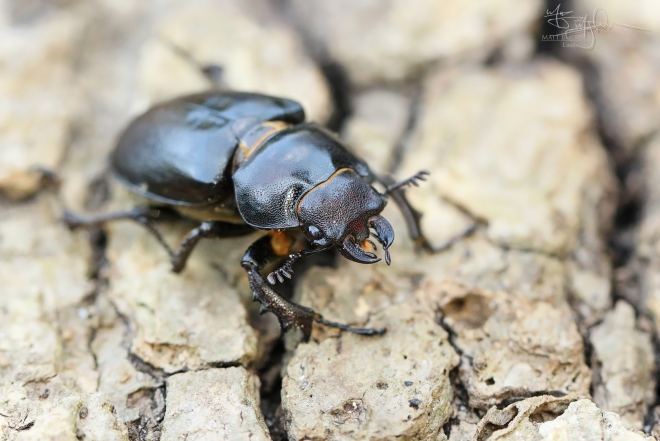
A female stag beetle (Lucanus placidus) that Caro found in her shoe.
As I was photographing the beetle Caro called my attention to a striking Eight-spotted Forester Moth (Alypia octomaculata) that was nectaring on the Coreopsis blooms in our garden.
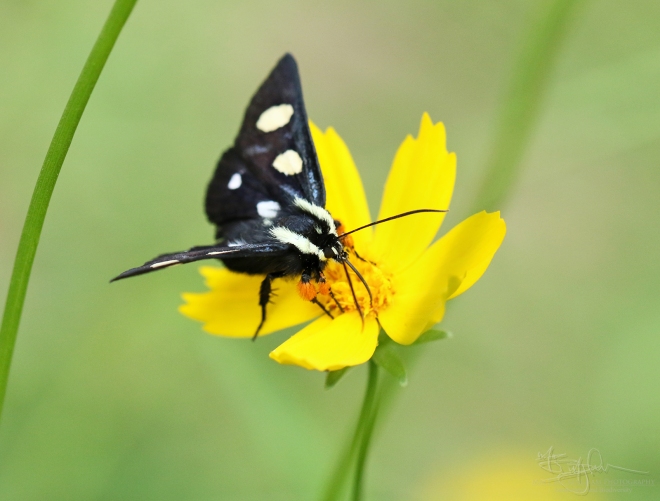
An Eight-spotted Forester Moth nectars on Coreopsis blooms.
A few days later, Caro found another interesting beetle in the yard, a colorful Line Buprestis (Buprestis lineatus).
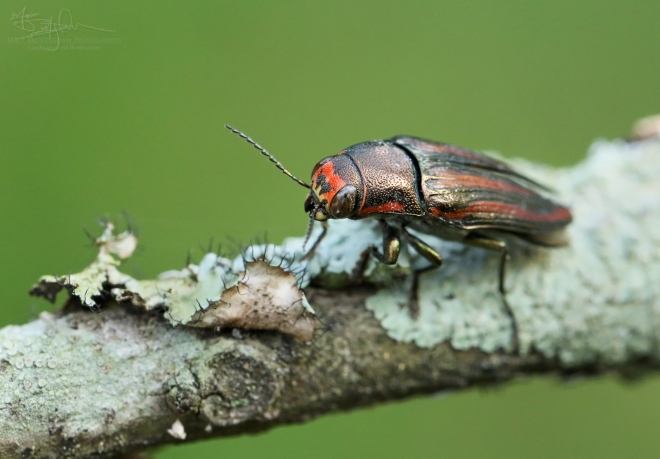
A Lined Buprestis Beetle
My eagle-eyed wife also spotted this little jumping spider (Colonus sylvanus) in our garden.
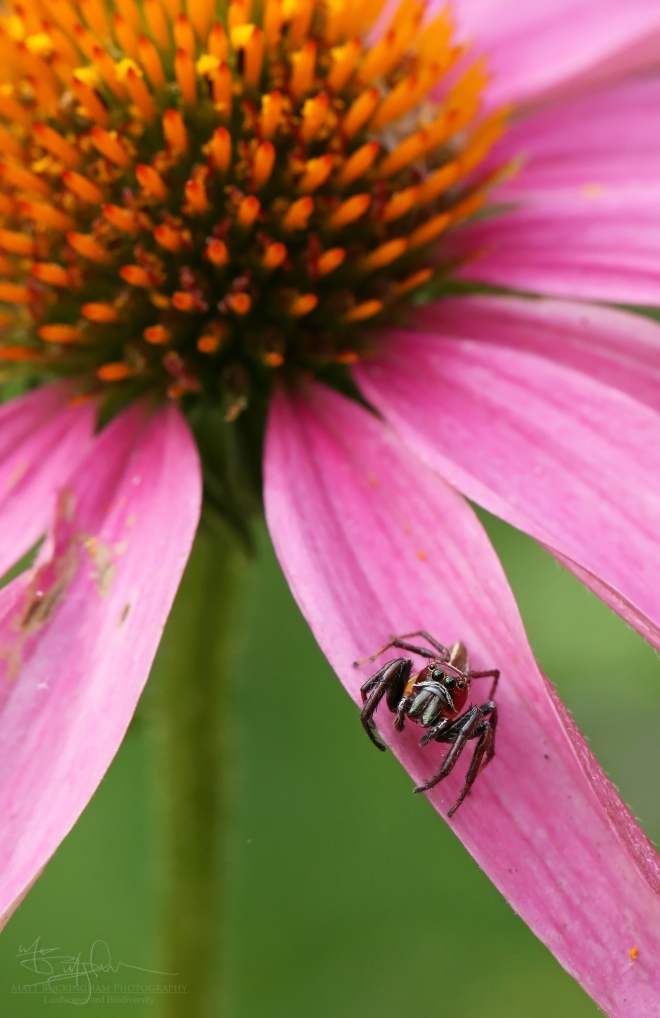
A jumping spider on a Purple Coneflower bloom in our Garden.
Target Species: White-tailed Deer (Odocoileus virginianus)
When I added White-tailed Deer to my list of 2017 biodiversity goals, I had a very specific image in mind. Though the image below is not exactly what I had hoped for, I was happy enough with it to cross the species off my list. Caro and I spotted this young buck in a mature Longleaf Pine Savanna one evening, and I managed a few shots before it disappeared among the rolling terrain.

A young White-tailed Deer Buck in a longleaf pine savanna.
Back in our yard, we came across a Fiery Searcher (Calosoma scrutator). Also known as the Caterpillar Hunter, this large predatory beetle is, in my opinion, among the most beautiful insects in the country.

A Fiery Searcher on the hunt in our backyard.
In early June, I found a nice male Eastern Hercules Beetle (Dynastes tityus) near our house. One of North America’s largest and most impressive insects, these beetles inhabit mature forests with abundant hardwoods.
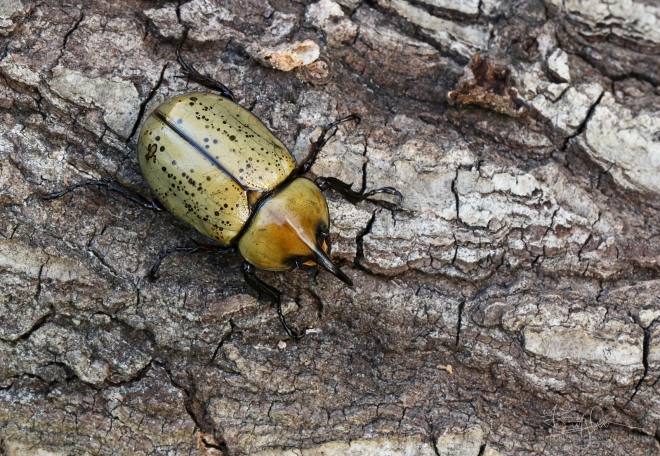
A fine male Eastern Hercules Beetle

A fine male Eastern Hercules beetle.
In late July, our old friend Frederick the Three-toed Box Turtle appeared again in our backyard. Caro spotted her eating cantaloupe rinds from fruit that we set out to try and attract beetles and other insects to our yard.
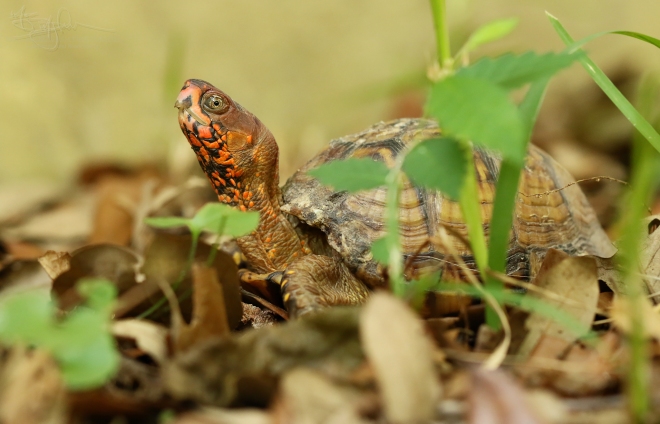
Frederick returns for a visit
I’ll end this post with an image from early August, the last time I set out into the woods with the intention of making images. I spotted this Green Lynx Spider (Peucetia viridans) feeding on predatory robber fly. The spider had taken an ambush position among the blooms of a Rough Blazing Star (Liatris aspera).
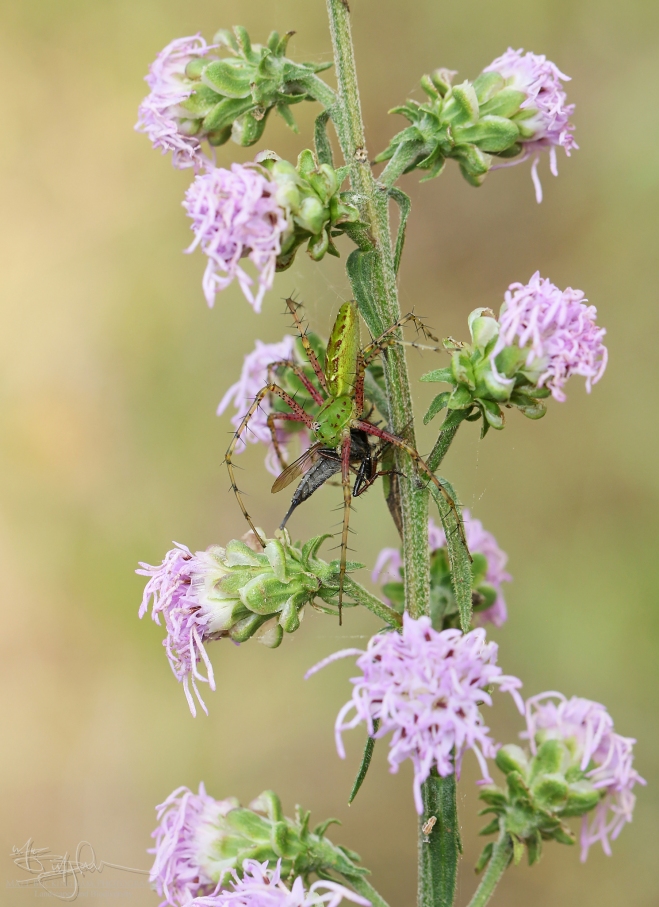
A Green Lynx Spider in ambush mode on the blooms of a Rough Blazing Star.
I am very much looking forward to fall, and hope to set out to capture new landscapes and biodiversity with a renewed passion and sense of purpose.











